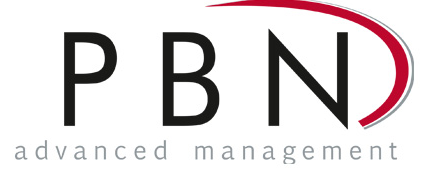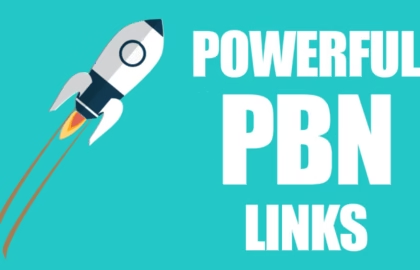PBN Backlinks In the world of SEO, backlinks remain a cornerstone of ranking success. Among the many backlink strategies, PBN backlinks continue to spark debate. Loved by some and feared by others, PBNs are considered a high-reward, high-risk technique. This guide will help you understand what PBN backlinks are, how they work, their advantages, and the potential pitfalls you need to avoid.
2. What is a Private Blog Network (PBN)?
A Private Blog Network is a collection of websites, usually owned by one individual or organization, built specifically to link to another website to improve its rankings in search engines.
The idea is simple:
- Acquire expired or auctioned domains that have existing authority and backlinks.
- Rebuild or repurpose those domains into niche-related blogs.
- Place backlinks from those blogs to your money site.
The domains in a PBN often look like real blogs or websites but are part of a network secretly controlled by the same entity. Since Google’s algorithm values backlinks, especially from authoritative sources, this tactic can manipulate rankings when executed well.
3. How Do PBN Backlinks Work?
PBN backlinks work by transferring link equity (or link juice) from authoritative domains to a target site. Here’s how the process typically unfolds:
- Identify high-quality expired domains with clean backlink profiles and strong metrics (DA, DR, TF, etc.).
- Register those domains and host them individually.
- Rebuild the content, often mimicking the site’s old version using tools like the Wayback Machine.
- Write new blog posts with backlinks to your money site.
- Interlink these posts and diversify anchor text to make it appear natural.
By leveraging the power of once-active, respected domains, you can influence search engines to trust your site more, which leads to better rankings.
4. Benefits of PBN Backlinks
Despite their controversial nature, PBN backlinks come with notable advantages:
a. Fast Ranking Results
PBN backlinks can boost rankings quickly, especially in low to medium-competition niches. Some site owners report movement within days or weeks.
b. Full Control
You can control the anchor text, link placement, and context — a luxury not afforded with most other link-building methods.
c. High Authority
If built on strong expired domains, PBN backlinks carry significant domain authority and trust flow.
d. Scalability
Once your network is set up, you can scale campaigns easily by adding more sites or posts.
5. Risks and Controversies
PBN backlinks exist in a gray to black-hat area of SEO, which means they come with risks:
a. Google Penalties
Google’s algorithms — and manual reviewers — are trained to detect and penalize PBNs. If caught, your site could:
- Lose rankings overnight.
- Be de-indexed.
- Receive a manual action.
b. Footprint Exposure
Poorly set-up PBNs leave detectable digital footprints (same IP, hosting, themes, plugins), making it easy for Google to identify networks.
c. High Cost
While PBNs may seem like a shortcut, building and maintaining them is expensive, especially if you’re doing it right.
d. Time-Consuming
Managing multiple websites, hosting accounts, and content production can be labor-intensive.
6. How to Build a PBN (Step-by-Step)
Here’s a basic overview for building your own PBN:
Step 1: Find Expired Domains
Look for expired domains with:
- Clean backlink profiles
- High domain authority
- No history of spam
Tools: Expireddomains.net, DomCop, SpamZilla
Step 2: Register Domains
Use different registrars to avoid patterns. Don’t use your main account for all domains.
Step 3: Host Separately
Each domain should be hosted on a unique IP address. Use different hosting providers or use SEO hosting with varying Class C IPs.
Step 4: Rebuild Websites
Use original content or recreate old versions using archive tools. Keep the design simple but professional.
Step 5: Post Content with Backlinks
Create relevant, high-quality posts and link back to your target website. Use variations in anchor text, link placement, and frequency.
Step 6: Keep It Natural
Don’t link to your money site from every post. Include external links to authority sites and build interlinking.
7. Buying PBN Links: What to Know
Many SEOs choose to buy PBN backlinks instead of building their own network. Here are key tips:
a. Vet the Network
Ask for:
- Domain metrics (DA, DR, TF)
- Sample URLs
- Traffic proof
Avoid networks that are too public or overly promoted.
b. Check for Footprints
Avoid networks where:
- All sites use the same design
- Domains are irrelevant or spammy
- Content is low quality or spun
c. Pricing
Expect to pay anywhere from $10 to $200+ per link, depending on the authority and niche.
d. Avoid Link Farms
Steer clear of sites selling hundreds of outbound links, as they are more likely to be penalized.
8. PBN Link Footprints and Avoiding Detection
Footprints are the trails of evidence that signal your sites are part of a PBN. To avoid detection:
- Use different registrars and WHOIS info (or privacy protection).
- Separate hosting with varied IPs.
- Use different CMS themes and plugins.
- Avoid interlinking PBN sites.
- Vary anchor texts and linking patterns.
- Post non-linking content regularly.
If you build a PBN with no footprints, relevant content, and smart linking, your risk is much lower.
9. Google’s View on PBNs
Google’s official stance is clear: PBNs violate its Webmaster Guidelines. According to Google:
“Any links intended to manipulate PageRank or a site’s ranking in Google search results may be considered part of a link scheme.”
This includes:
- Buying or selling links
- Excessive link exchanges
- Using automated programs to create links
- PBNs
Despite this, PBNs still work, which is why many SEOs use them. But they do so with caution and an exit strategy in mind.
10. PBN Backlinks vs Other Link Building Methods
| Link Building Method | Cost | Risk | Control | Speed | Quality |
|---|---|---|---|---|---|
| PBN Backlinks | High | High | High | Fast | Variable |
| Guest Posting | Medium | Low | Medium | Slow | High |
| Niche Edits | Medium | Medium | Low | Medium | High |
| HARO/Editorial Links | Low | Low | Low | Slow | High |
| Forum/Blog Comments | Low | Low | Low | Slow | Low |
PBNs offer speed and control, but at the cost of higher risk and maintenance. A balanced SEO strategy might include PBNs as a supplement, not the foundation.
11. Tips for Safe PBN Link Usage
If you’re going to use PBNs, consider the following best practices:
- Diversify your backlinks: Don’t rely solely on PBNs.
- Use branded anchor text: Avoid exact-match over-optimization.
- Don’t link to money sites from every PBN domain.
- Maintain your PBN sites: Update them regularly.
- Monitor performance: Track SERPs and traffic for any unusual drops.
- Avoid public PBNs: These are the most likely to get penalized.
Use PBNs as part of a broader link-building campaign, not your entire strategy.
12. Final Thoughts
PBN backlinks remain a powerful yet risky SEO tactic in 2025. If used responsibly, they can skyrocket your rankings and help you dominate niche markets. But if you cut corners or ignore Google’s guidelines, you could face significant setbacks.
Whether you choose to build your own PBN or buy links from a trusted vendor, always prioritize quality, relevance, and stealth. With the right approach, a Private Blog Network can be a secret weapon in your SEO arsenal — but only if you’re smart about it.
Would you like a downloadable PDF version or visual flowchart for building a PBN?






